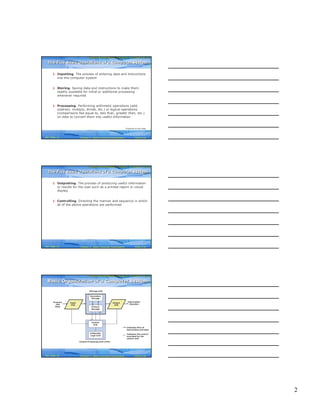This document summarizes key concepts from Chapter 2 of the textbook "Computer Fundamentals" by Pradeep K. Sinha and Priti Sinha. It discusses the basic organization of a computer system including input and output units, storage units, the arithmetic logic unit, control unit, and central processing unit. It also covers the five basic operations of a computer system: inputting, storing, processing, outputting, and controlling.





